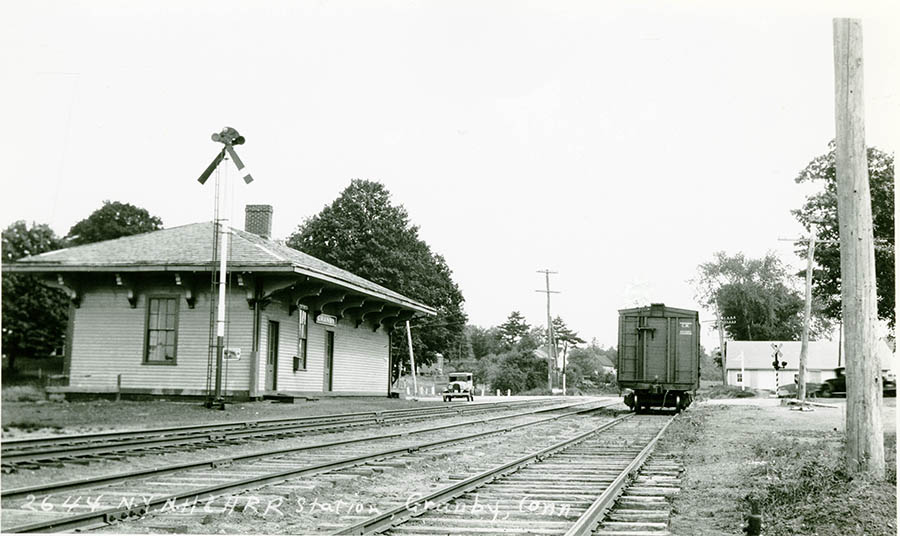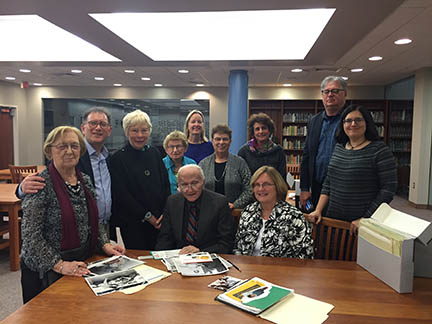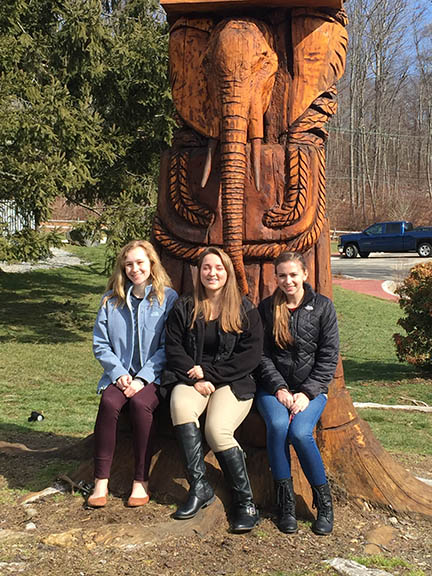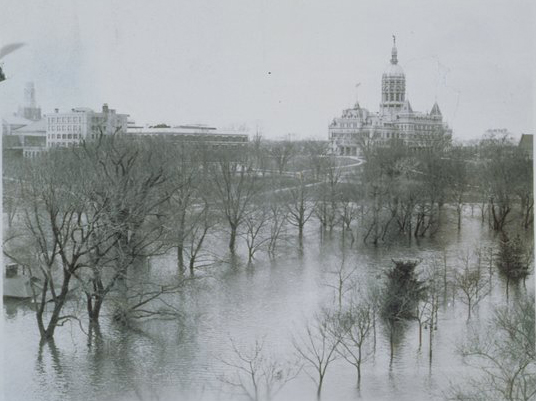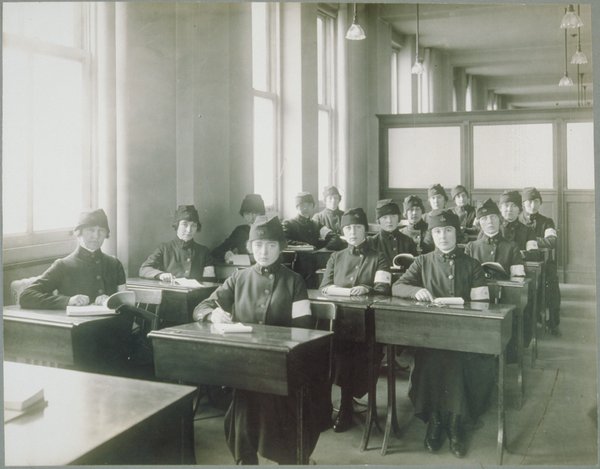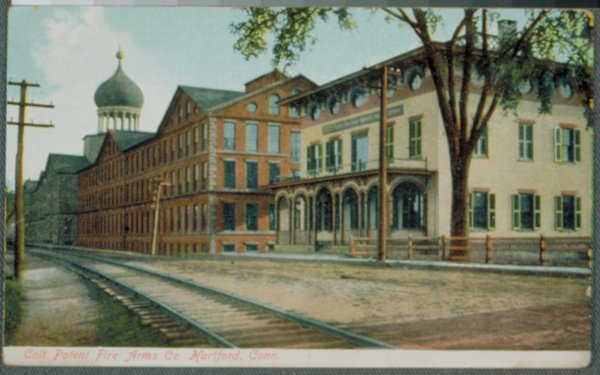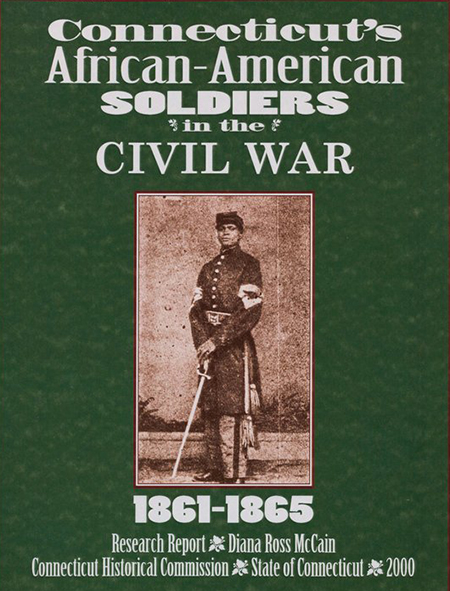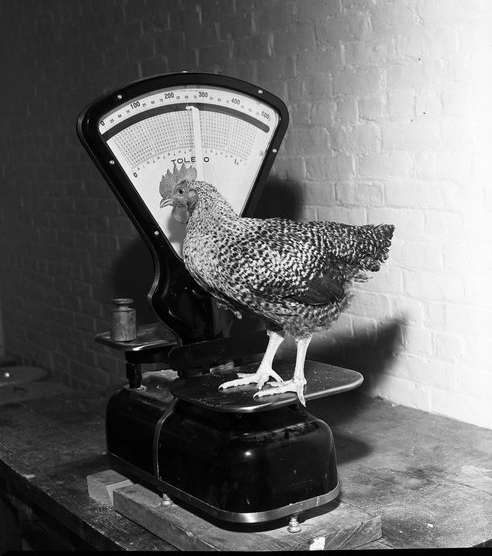The Archives & Special Collections reading room is closed on Monday, September 5, for the Labor Day holiday.
Author Archives: Laura Smith
Are Photographs a Truly Reliable Primary Source?
Do you notice something different about these two images?
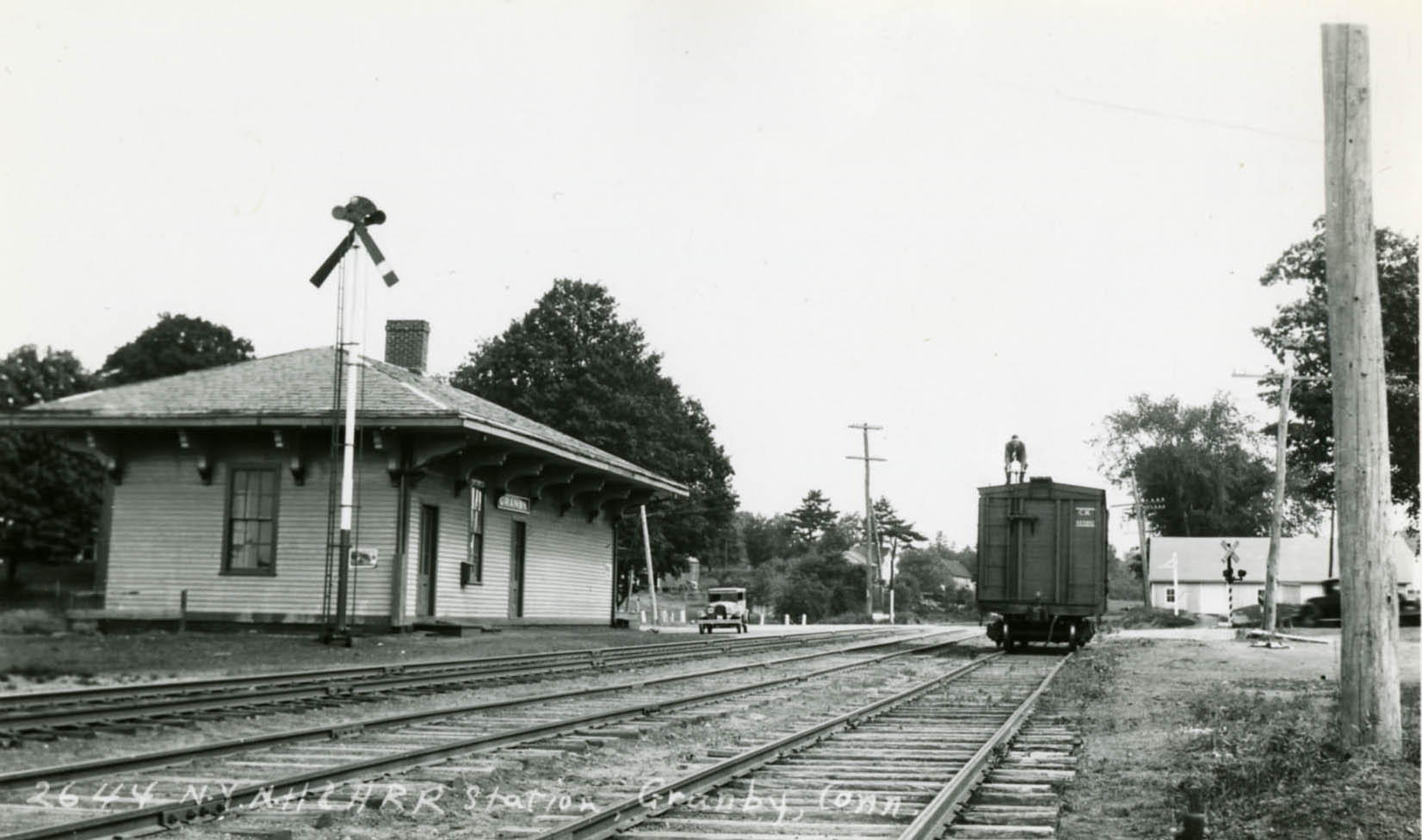 I’m sure you see it — in the second photograph there is a man standing on top of the box car. These two digital images are from the same actual, physical object of a photographic print. What do you think happened here?
I’m sure you see it — in the second photograph there is a man standing on top of the box car. These two digital images are from the same actual, physical object of a photographic print. What do you think happened here?
It’s an interesting story. This photograph, of the Granby, Connecticut, railroad station, was taken around 1930 by the noted regional photographer Lewis H. Benton, who was born in Taunton, Massachusetts, in 1872 or 1873 and worked for the New York, New Haven & Hartford Railroad as a clerk. In his free time he would travel around the region with his sidekick Irving Drake and take photographs of railroad stations and structures. In both versions of the photograph you will see Mr. Drake’s sedan near the station; in the second image that’s him on top of the railroad car. This image was donated along with thousands of other photographs of railroad locomotives, stations, and scenes by Mr. Francis D. Donovan of Medford, Massachusetts, in 2006.
Recently we had a visit to the archives of Mr. Robert Belletzkie, a very knowledgeable railroad historian who maintains a website focusing on railroad stations in Connecticut — TylerCityStation.info. Mr. Belletzkie was conducting his research in the Donovan Papers, saw the photograph, the version without Mr. Drake on top of the car, and knew something was wrong. He had seen this same image before in other collections (which is not uncommon; railroad photograph collectors routinely make copies and share the prints among themselves) but he knew the photograph to have the image of Mr. Drake on top of the box car.
Mr. Belletzkie brought the photograph to my attention and we took a close look at it. A small dot of white-out had been placed on the print to cover up the image of Mr. Drake in the photo. How intriguing! Who would have done that, and why? It was certainly done before the collection was donated to Archives & Special Collections. Did Mr. Donovan do it? Did someone do it before that particular print made its way to Mr. Donovan?
Mr. Belletzkie offers this explanation — “Whoever covered up Mr. Drake thought it was inappropriate for him to be seen posturing in a serious station photograph or perhaps even that Mr. Benton was unaware of him up there and did not intend him to be in the shot. A larger study of the Benton & Drake photos currently underway, however, shows several shots with a similar, humorous touch. The eradicator’s sense of propriety may have been offended but anyone who retouches historical photographs does a disservice to future generations by not passing on something exactly as its creator intended.”
Well, who or however it happened, I wanted to set the record straight. Yesterday I gave the print to the UConn Library’s Conservation Librarian, Carole Dyal, who expertly scraped off the white-out to reveal Mr. Drake on top of the railroad car.
We’ve come to expect that photographs reveal the truth of any historical moment. Sometimes we have to remember that photographs can be altered and obscured, which affects our knowledge of historical events.
American Montessori Society Archives Committee meeting
Thanks to the Archives Committee members of the American Montessori Society for their visit yesterday to Archives & Special Collections, to conduct a meeting, learn about the digital repository, and help identify images in the collection. The AMS donated their records in 2006 and the Society’s Archives Committee has advised us on the records since then, frequently adding important documents and media. The finding aid and selected documents from the records are available in our digital repository, as well as a full run of their publication The Constructive Triangle.
Present at the meeting, as shown in the photograph, are (seated) Robert Rambusch (husband of AMS founder Nancy McCormick Rambusch) and Marilyn Jean Horan, (standing) Maria Gravel, Matty Sellman, Archives Committee chair Marie Dugan, Carolyn Dodd, Susan Kambrich, Phyllis Povell, Laura Smith, Keith Whitescarver, and Natalie Danner.
Connecticut History Day winners of the ASC prize!
Congratulations to Nina Lestrud, Jocelyn Zordan and Bayleigh DiMauro, students at Torrington High School, who were the winners of the Outstanding Entry Related to Exploration, Encounter, Exchange in Connecticut History, sponsored by Archives & Special Collections and presented to these students at the Connecticut History Day contest held on April 30 at Central Connecticut State University in New Britain.
The project for which Nina, Jocelyn and Bayleigh won the prize was a Senior Group Documentary titled: Ivory Trade and the Impact it had on Connecticut.
Commemorating the Flood of 1936
In March 1936, after experiencing heavy storms that swept from Ohio to Maine and as far south as Virginia, the Connecticut River, swollen beyond its banks, spilled over into Hartford, Connecticut, flooding over one-fifth of the city. Adding to that was the late winter melting of snow and ice, causing the river to crest at 8 1/2 feet, the highest ever recorded at that time. Other cities and towns along the Connecticut River were equally affected — in Springfield, Massachusetts, 20,000 townspeople lost their homes.
You can find photographs of the devastation of the Flood of 1936 on our digital repository, mostly from the Southern New England Telephone Company Records.
International Women’s Day
March is Women’s History Month!
This photograph from 1918 shows women previously employed as telephone operators for the Southern New England Telephone Company getting ready to serve in the United States Army during World War I as Signal Corps operators in Europe. These women, all of them operators in Hartford, were specifically chosen for their positions because they were fluent in French.
On April 28, 1918, this Signal Corps class marched in a Liberty Bond parade in Hartford, holding the flags of the United States, France, Belgium, and Great Britain. The SNET company magazine, The Telephone Bulletin, cheered the women for their patriotism and bravery in preparing to go to the war front, writing “…the enthusiastic reception given these young women was wholly deserved, for with heads erect, shoulders thrown back and with martial tread, they made a striking appearance as they marched past the dense crowd on the sidewalks.”
“Our Community at Winchester” — an exhibit that evokes an era of union and community solidarity
[slideshow_deploy id=’6252′]
“Our Community at Winchester: an Elm City Story,” is an exhibit, created by the Greater New Haven Labor History Association (GNHLHA), that reminds us of how communities are formed within and around factories and industrial workshops, as well as the impact and rippling effect that the disintegration of these industries have on the lives of their workers and the greater communities, towns and cities where they are located. The exhibit is currently available for viewing in the Norman Stevens Gallery in Homer Babbidge Library until early June.
As one of New Haven’s most important employers in the latter half of the 20th century, the Olin-Winchester Repeating Arms plant had an enormous impact on the Newhallville community and the city of New Haven, Connecticut. During this time, workers created a variety of social outlets, from the Winchester Club to bowling to musical performances, plays and gatherings of all kinds, creating a community within a community. But the struggle to achieve better, more equitable, working conditions was ongoing and often met with brutal resistance from the company. Later, with the introduction of Science Park, employment at the plant was repeatedly downsized until accessible work opportunities for people in the community no longer existed. The plant closed in 2006, throwing its remaining 198 employees out of work.
The stories of Winchester’s workers and the impact of this important employer throughout the 20th and early 21st centuries are told in this exhibit through the use of oral histories, photographs and documents. The exhibit utilizes materials from the records of the International Association of Machinists Local 609, now held by the GNHLHA, which represented workers at the plant beginning in 1956, as well as articles, donated images and personal recollections from those who were involved with the plant.
The photographs above show some of the panels in the exhibit as well as Greater New Haven Labor History Association director Joan Cavanagh and member Monica McGovern.
Anniversary of Colt Armory fire
On February 4, 1864, the East Armory of the famous Colt Patent Fire Arms Company, built in 1855 in Hartford, Connecticut, was completely destroyed in a fire, incurring $2 million in damages. Elizabeth Colt, Samuel Colt’s widow, had insured the factory buildings and the structures were quickly rebuilt, including the distinctive blue onion dome. Today the armory is part of a National Historic Landmark District.
Celebrating Black History Month
Did you know that William Henry Johnson, the first African-American from Connecticut who volunteered to serve in the Civil War, enlisted in the all-white Eighth Regiment Connecticut Volunteer Infantry in September 1861? Later African-American volunteers from Connecticut generally joined the all-black Fifty-fourth Massachusetts Regiment. It wasn’t until November 1863, as the North’s insatiable need for soldiers intensified, that the Twenty-ninth (Colored) Connecticut Regiment Volunteer Infantry was formed.
Our collections include the publication “Connecticut’s African-American Soldiers in the Civil War, 1861-1865,” written in 2000 by Diana Ross McCain. You can read it in its entirely on our digital repository.
Happy New Year!
Merry Christmas!
Merry Christmas, everyone! Our reading room will be closed for the two weeks between December 21 and January 4 but please contact us at archives@uconn.edu if you have questions about our collections.
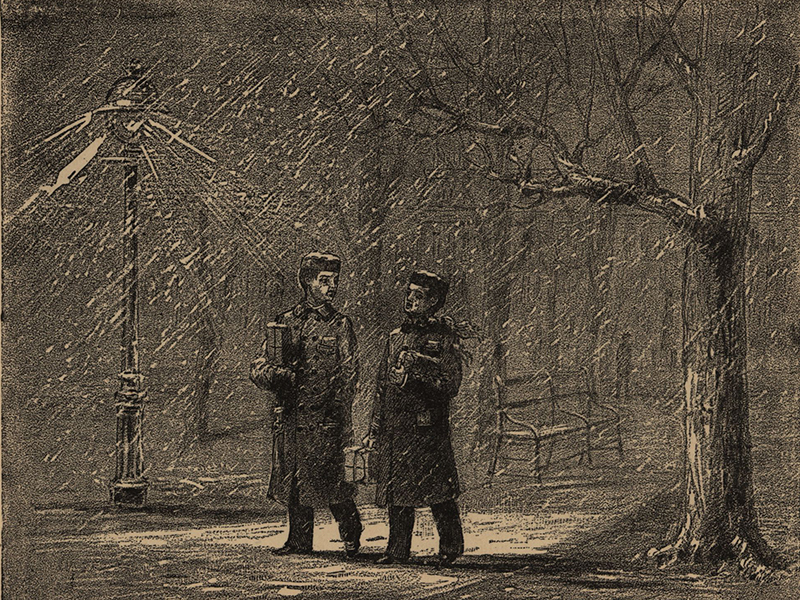 From Christmas Rhymes and Stories, Original and Selected, including a Visit from Santa Claus, by Kriss Kringle, published in 1887.
From Christmas Rhymes and Stories, Original and Selected, including a Visit from Santa Claus, by Kriss Kringle, published in 1887.


